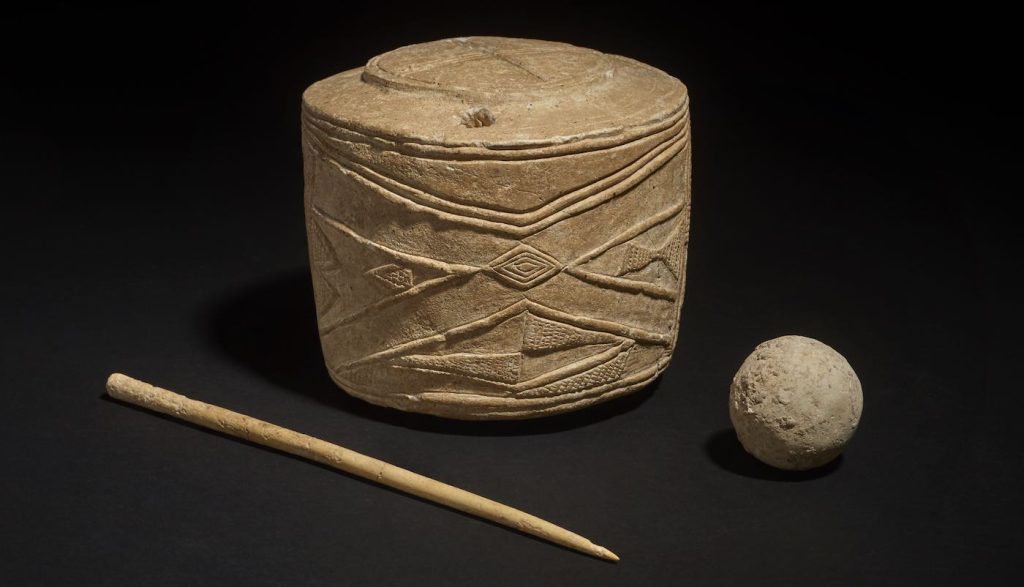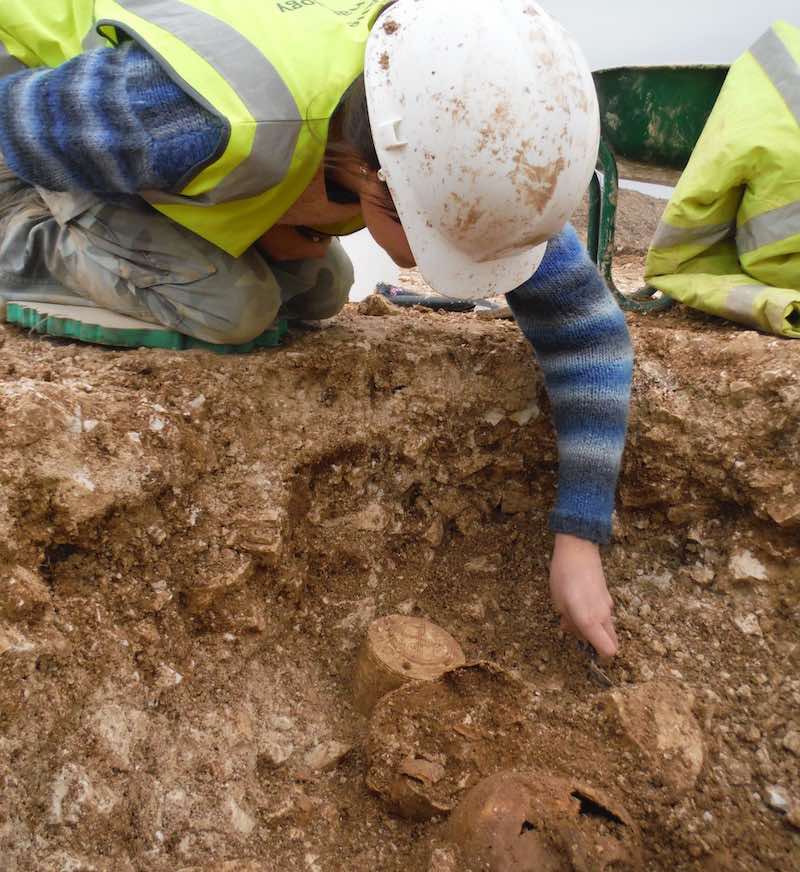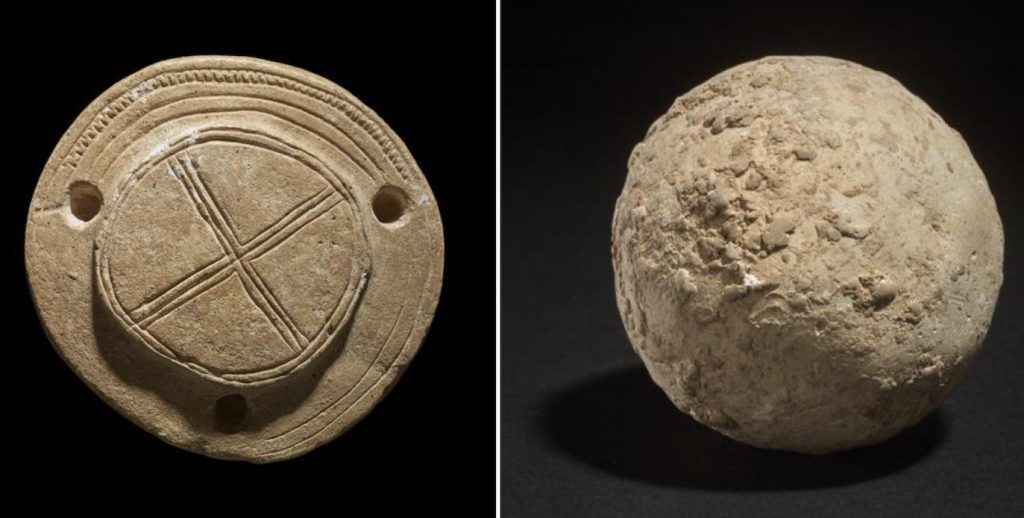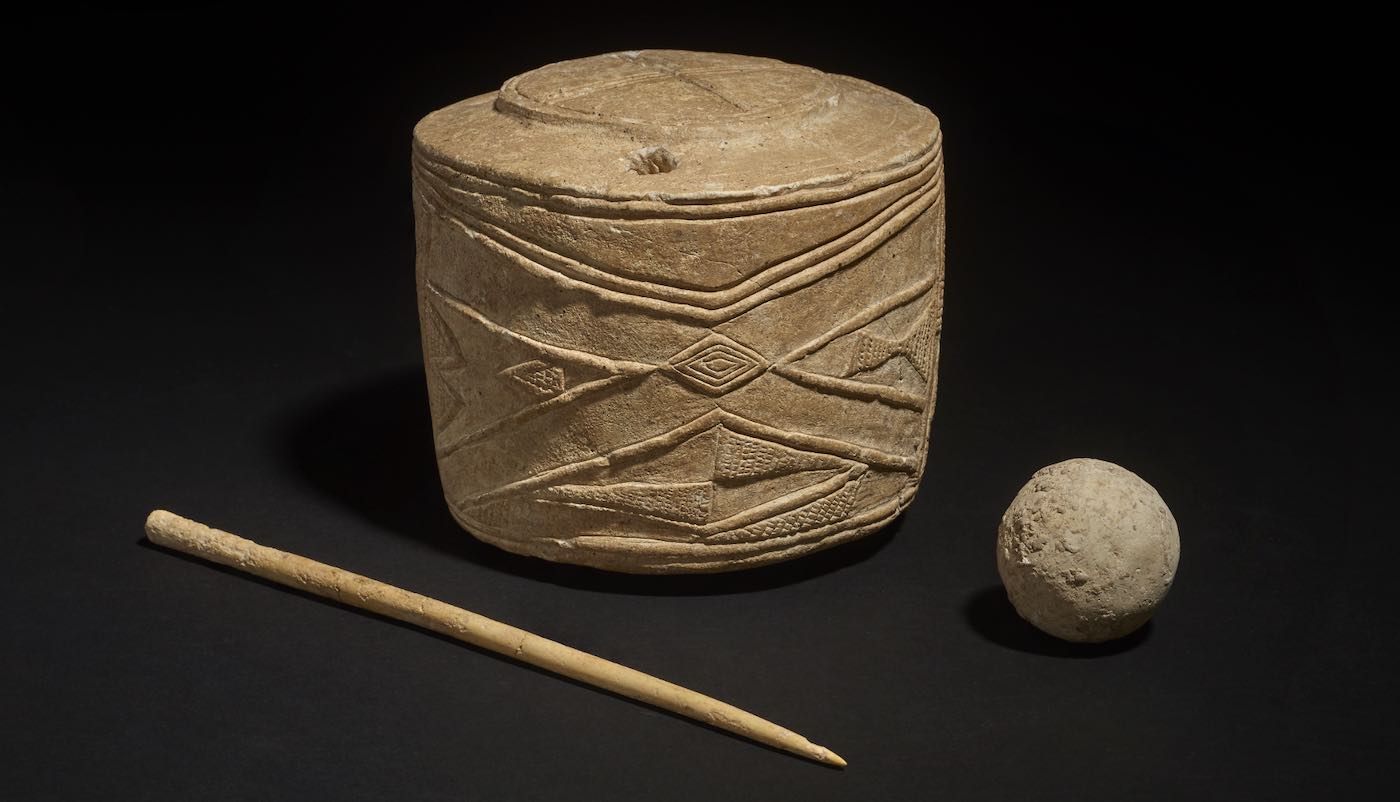
The British Museum has announced the discovery of “the most important piece of prehistoric art to be found in Britain in the last 100 years.”
The object is a 5,000-year-old chalk sculpture and was discovered on a country estate near the village of Burton Agnes in East Yorkshire.
The sculpture was first unearthed in a routine excavation by Allen Archaeology in 2015, and has since been studied extensively and conserved. Its existence is now confirmed to be one of the most significant ancient objects ever found on the British Isles.
This remarkable discovery is now on public display for the very first time as part of the British Museum’s The World of Stonehenge exhibition, open until July 2022.
The sculpture is decorated with elaborate motifs that reaffirms a British and Irish artistic style that flourished at exactly the same time as Stonehenge was built.
It was uncovered alongside the burial of three children. The children are different ages and were buried in close contact in a moving scene. The two youngest were placed in the grave touching or holding hands. The eldest child was laid in the grave holding the two younger children. The sculpture was found just above the head of the eldest child and it includes three hastily added holes, perhaps marking the presence of the three bodies in the grave.
Described as a chalk drum, it is only the fourth example of its kind known to have survived. Despite the use of the term ‘drum’, they are not thought to have had a musical function. Rather they are works of sculptural art, perhaps intended as talismans to protect the children they accompanied.

A radiocarbon date from one of the child’s bones in Burton Agnes identifies the burial as from 3005–2890BC. It also confirms for the first time that these burial drums were made at the same time as the first construction phase of Stonehenge. This is significant because it suggests that at the same time as the monument’s bluestones were being moved hundreds of kilometers from west Wales to Salisbury Plain, communities across Britain and Ireland were also sharing artistic styles, and probably beliefs, over remarkable distances.
RELATED: Extraordinary Roman Mosaic and Villa Discovered Beneath British Farmer’s Field
The drum was accompanied by a chalk ball and polished bone pin, which lay beneath the head of one of the children. The chalk ball is a type of object that has also recently been found by archaeologists at the site of Bulford, close to Stonehenge.
Its symbolism is unclear. It could be a fertility symbol or even a toy held dear by a child. The bone pin is similar to objects placed with burials inside Stonehenge at around the same time period as the Burton Agnes drum was buried (c.3000 BC).

The Burton Agnes drum is also one of the most elaborately decorated objects of this period found anywhere in Britain and Ireland. Every inch of the object is decorated with motifs that are found on a range of prehistoric objects, including pottery and stone balls, and architectural surfaces, some incorporated within houses and tombs.
This was the artistic style of the people who built Stonehenge and related monuments across Britain and Ireland. It helps to illustrate the joined-up nature of society during this period, and the vibrant artistic culture of the time. The motifs themselves are abstract but may convey symbolism or religious principles that have yet to be deciphered.
CHECK OUT: English Teenager Discovers Hoard of 3,300 Year-Old Axes and Becomes Metal Detecting Celebrity
“The discovery of the Burton Agnes grave is highly moving,” said Neil Wilkin, curator of The world of Stonehenge at the British Museum. “The emotions the new drum expresses are powerful and timeless, they transcend the time of Stonehenge and reflect a moment of tragedy and despair that remains undimmed after 5,000 years.”
“We were all stunned to see it up close when it came off site,” said Mark Allen, Director of Allen Archaeology. “The detailed relief carving on the drum is quite something to behold and shows great skill by its maker. Research is ongoing on the drum, the burials and the surrounding excavations, and we look forward to publishing more on this in the future.”
REVEAL The Stunning Discovery For Friends – Share on Social Media..




















